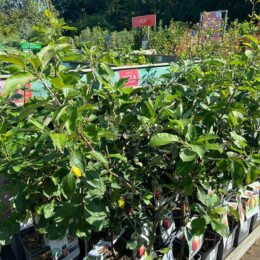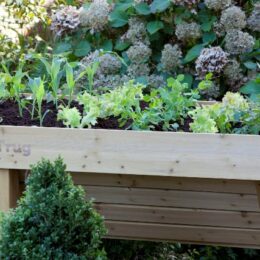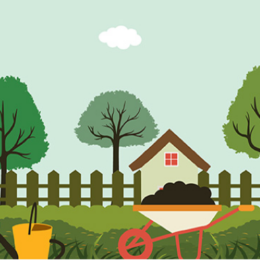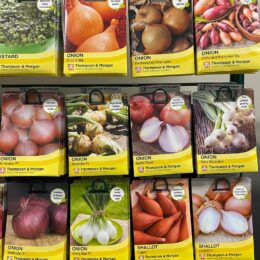If you have apple, plum, gage, or damson trees this is the time of year to be thinking about putting measures in place to avoid moth larvae from damaging your fruit later in the year. Luckily the solution is easy and very environmentally friendly! You simply need to buy a Codling Moth trap (apples) or Plum Moth trap (plums, damsons, gages) and put it into the tree when it is flowering. If you already have a trap we also sell the refills.
Codling Moths
Codling moths lay their eggs on the fruitlets of apple trees. They also occasionally affect pear, quince and peach trees. The larvae appear in the summer and start to eat their way through the fruit, usually from the “eye” (opposite end to the stalk) into the core. The larvae can have a devastating effect on a crop of apples, leaving the fruit full of tunnels where they have burrowed through and peppered with their excrement pellets.
Plum Moths
These can affect plums, damsons, and gages. Infestation and lifecycle are similar to that of the codling moth. Fruits affected often appear to be misshapen and may ripen early. The caterpillars are pale pink with brown heads. In warm summers, some caterpillars may pupate early and produce a second generation in late summer.
Alternative solutions
There are a number of ways to eradicate the moths organically: Use codling or plum moth traps – these are impregnated with pheromones which attract the males into the trap and thereby reduce the number available to mate with females. These should be used from mid-May. The traps are chemical-free and will not affect beneficial insects
- Attract insect-eating birds to the area using nest boxes and feeders – these will need to be replenished regularly
- Introduce natural pest control, such as Steinernema carpocapsae. These are microscopic worms that are sprayed directly onto the pest and will feed and multiply within them
- Hang pieces of cardboard in the trees for larvae to over-winter in – then make sure these are removed and destroyed before the spring
- Remove all dead bark and debris from the base of the fruit trees to reduce the number of places for the larvae to pupate over the winter








